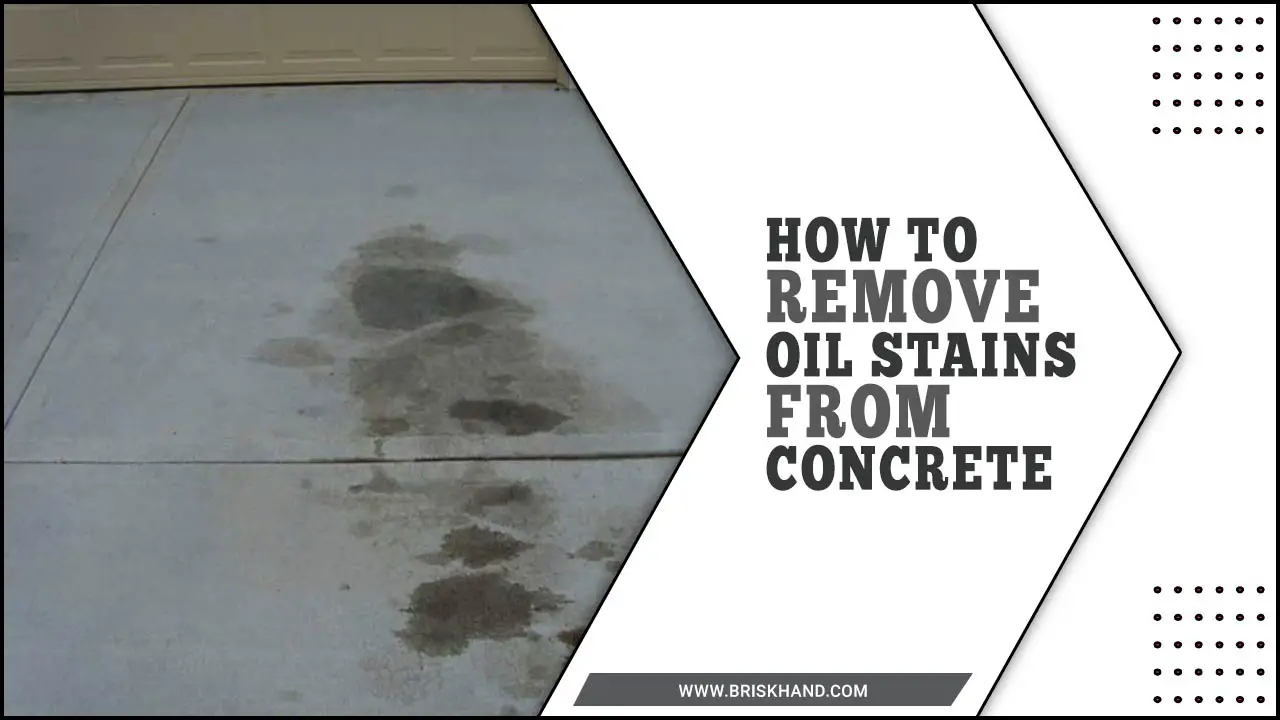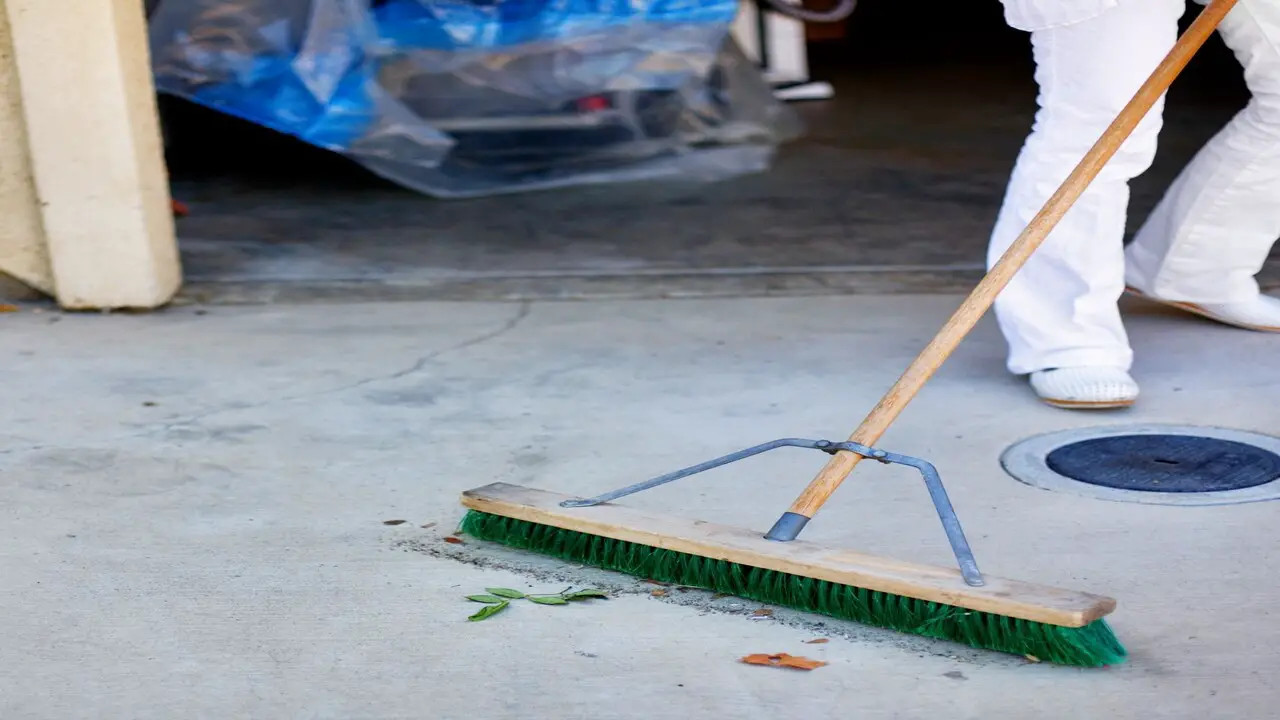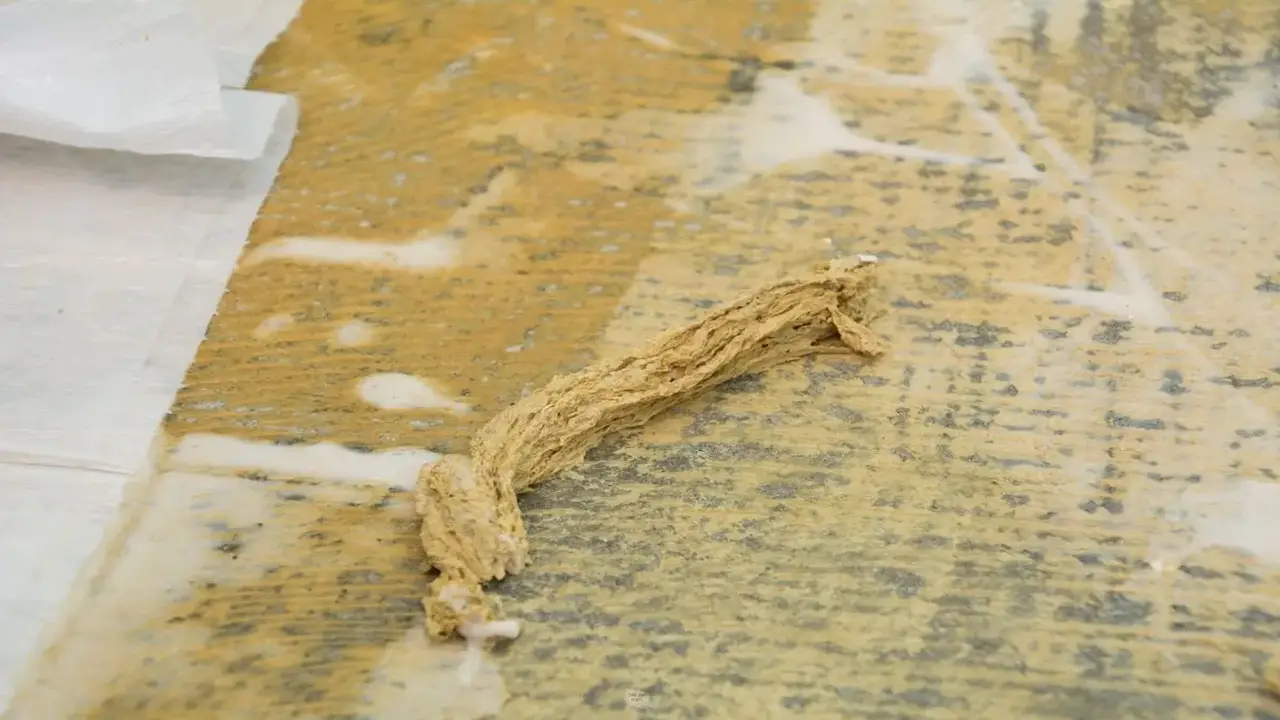Concrete is a durable and versatile material that withstands heavy foot traffic, vehicles, and constant exposure to the elements. However, concrete is also prone to unsightly stains, especially in areas where oil spills and leaks are common.
These stains not only degrade the visual appeal of your concrete surface but can also pose a safety hazard by making the surface slippery. Removing oil stains from concrete can be challenging, but it’s not impossible. Here we’ll provide you with a complete guide on how to remove oil stains from concrete surfaces. We’ll also cover the tools and materials needed to complete the job right the first time. From household items to commercial products, we’ll explore various options to suit your needs.

Different Types Of Oil Stains

When removing oil stains from concrete, it is important to identify the type of oil stain you are dealing with. Different types of oil stains may require different removal methods.
By identifying the specific type of oil stain, you can choose the most effective method for removal, whether it’s using absorbent materials, commercial cleaners, or DIY solutions. Here are some common types of oil stains that you may encounter:
- Motor Oil: This oil stain is typically black or dark brown and can be quite stubborn to remove.
- Cooking Oil: Cooking oil stains are often lighter in color and may have a greasy texture.
- Grease: Grease stains are commonly found in garages or workshops and can be thick and sticky.
- Hydraulic Fluid: Hydraulic fluid stains are usually clear or light yellow in color and can penetrate deep into the concrete surface.
Essential Tools And Safety Measures
When removing oil stains from concrete, having the right tools and taking safety measures is essential. Follow the instructions on the product label of the oil stain remover and take any necessary precautions to ensure your safety while working with these chemicals. Here are some tools that can help you effectively remove oil stains:
- Oil stain remover: Look for a commercial oil stain remover designed for concrete surfaces. These products are formulated to break down and lift the oil stain from the concrete.
- Scrub brush or broom: Use a stiff-bristled scrub brush or broom to agitate the oil stain remover and help loosen the stain from the concrete.
- Pressure washer: If you can access a pressure washer, it can effectively remove oil stains from concrete. The high-pressure water can help dislodge and wash away the oil stain.
- Safety goggles and gloves: Always wear safety goggles to protect your eyes from splashes or fumes. Also, gloves can help protect your hands from harsh chemicals in the oil stain remover.
How To Remove Oil Stains From Concrete – 6 Steps

Removing oil stains from concrete can be daunting, but restoring your concrete surfaces to their original condition is possible with the right steps. Following these steps, you can effectively remove oil stains from your concrete surfaces and restore their appearance. Always take proper safety precautions when working with chemicals and consult professional help. Here are 6 steps on how to remove oil stains from concrete:
Act Quickly
To ensure the best results in removing oil stains from concrete, it’s important to act quickly. The sooner you address the stain, the better your chance of completely eliminating it. Start using kitty litter or sawdust to absorb as much oil as possible before cleaning. Avoid using hot water, as this can set the stain further into the concrete. Instead, opt for cold water and utilize a degreaser or a mixture of dish soap and baking soda to break down the oil.
Absorb Excess Oil
To remove oil stains from concrete, start by absorbing excess oil with cat litter or sawdust. Spread the absorbent material over the stain and let it sit for several hours. Once the oil is absorbed, use a broom or stiff brush to sweep up the material and dispose of it properly. Repeat this process until most of the oil is absorbed and the stain is less visible. Absorbing excess oil helps prevent spreading and makes it easier to clean the remaining stain.
Scrape Off Residue

Use a dull blade or putty knife to remove excess residue from a concrete surface. Be careful not to damage the concrete while scraping off the residue. If the oil has penetrated the concrete, use an absorbent material like kitty litter to soak the excess oil. Let the absorbent material sit on the stain for a few hours before removing it. You can use a commercial degreaser or create a mixture of baking soda and dish soap to break down the oil for stubborn stains.
Apply A Degreaser
Applying a degreaser is essential in removing oil stains from concrete surfaces. Choosing a degreaser specifically designed for concrete is important to ensure effective results. Generously apply the degreaser to the stained area and let it sit for the recommended time. Once the degreaser has had time to work its magic, use a stiff-bristled brush or a pressure washer to scrub the area and remove the stain.
Scrub With A Brush
Scrub the affected area with a stiff bristle brush to remove unsightly oil stains from your concrete garage floor. Use circular motions to effectively loosen the oil stain before applying a degreaser. This will enhance the cleaning process. Protect yourself from potential skin and eye irritation by wearing gloves and goggles. Rinse the area thoroughly with water to eliminate all traces of the oil stain. If necessary, repeat the process until the oil stain is completely eradicated.
Rinse Thoroughly
To remove oil stains from concrete, thoroughly rins the surface with water. You can use a high-pressure hose or a water bucket to ensure the area is rinsed properly. This step helps remove any loose debris or dirt from the concrete surface. It is important to avoid using hot water as it can cause the oil to embed deeper into the concrete. While rinsing, you can also use a stiff-bristled brush to scrub the area, which helps break up any remaining oil.
Prevent Future Oil Stains By Sealing The Concrete Surface

Sealing the concrete can prevent future oil stains on concrete surfaces. Sealing the concrete creates a protective barrier that helps repel oil and other liquids, making them easier to clean before leaving a stain. By taking these preventative measures and sealing your concrete surface, you can help protect it from future oil stains and maintain its appearance for years. To seal your concrete, follow these steps:
- Clean the surface: Before applying any sealer, thoroughly clean the concrete surface to remove dirt or debris. Use a pressure washer, scrub brush, and detergent to ensure a deep clean.
- Choose the right sealer: Different types of sealers are available, so it’s important to choose one specifically designed for use on concrete surfaces. Look for a sealer that is resistant to oil and other stains.
- Apply the sealer: Follow the manufacturer’s instructions for applying the sealer. Typically, this involves using a roller or sprayer to coat the surface with the sealer evenly. Be sure to apply the sealer in thin, even layers and allow each layer to dry before applying additional coats.
- Allow for curing time: After applying the sealer, allow it to cure for the recommended amount of time before subjecting the surface to heavy foot traffic or placing objects on it.
Conclusion
Removing oil stains from concrete requires a systematic approach and the right tools. In the above guideline, we have explored how to remove oil stains from concrete. The key steps are acting quickly, absorbing excess oil, scraping off residue, applying a degreaser, scrubbing with a brush, and rinsing thoroughly.
Repeating the process and sealing the concrete surface is important to prevent future oil stains. Additionally, maintaining a clean and oil-free concrete surface can be achieved by regular cleaning and avoiding spills. By following these steps and tips, you can effectively remove oil stains from concrete and keep your surfaces looking clean and pristine.
Frequently Asked Questions
1.How Do You Remove Old Oil Stains From Concrete?
Ans: To remove old oil stains from concrete, start by absorbing as much oil as possible with a rag or paper towel. Then, apply a concrete-specific degreaser or detergent and scrub the stain with a stiff-bristled brush. Let it sit for at least 30 minutes before rinsing with water. Repeat if necessary.
2.Does Dawn Dish Soap Remove Oil From Concrete?
Ans: Yes, Dawn dish soap can effectively remove oil stains from concrete. Mix a small amount of Dawn dish soap with warm water and apply it to the stain. Let it sit for 15-20 minutes before scrubbing with a stiff brush. Rinse with clean water and repeat if necessary.
3.How Do You Get Deep Oil Stains Out Of The Concrete Driveway?
Ans: To remove deep oil stains from a concrete driveway, start by covering the stain with kitty litter or sawdust to absorb excess oil. Then, scrub the stain using a commercial concrete cleaner or a homemade baking soda and dish soap solution. Consider using a pressure washer or hiring a professional cleaning service for stubborn stains. To prevent future stains, make sure to seal your concrete driveway regularly.
4.What Is The Best Oil Cleaner For Concrete?
Ans: The best oil cleaner for concrete is usually a degreaser or a concrete cleaner specifically designed to break down and remove oil stains. Some effective options include Krud Kutter Concrete and Driveway Pressure Washer Concentrate, Zep Heavy-Duty Citrus Degreaser, and Simple Green Concrete and Driveway Cleaner. Ultimately, the effectiveness of the cleaner will depend on the severity of the oil stain and the specific type of concrete being cleaned.
5.How Quickly Should You Act To Remove An Oil Stain On Concrete To Ensure It Doesn’t Set In?
Ans: Acting quickly is crucial when it comes to removing oil stains from concrete. The longer the stain sits, the deeper it penetrates, making removing it more difficult. Use a degreaser or absorbent material to tackle the stain before it can be set. If the stain has already been set, consider seeking professional cleaning assistance.

I am passionate about tools and electric work. I love finding new tools and experimenting with them.

